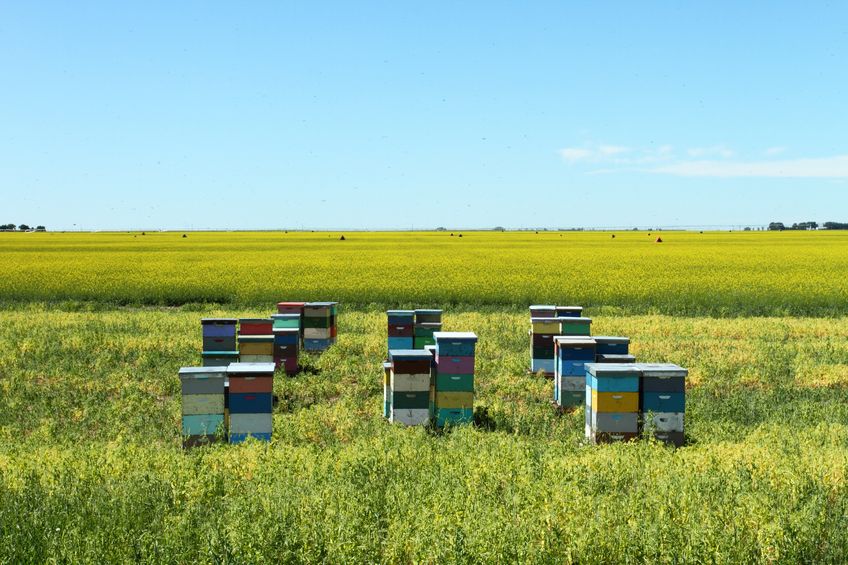
A large question mark hangs over the future of British agriculture now that the UK has voted to leave the EU. Rural property agency H&H Land and Property seeks to answer the question: What next for farming support?
The date was 23rd June 2016, when the UK voted to leave the European Union by 52% to 48%. The Government is expected to trigger Article 50 around March 2017 and this will start the exit negotiation process, which is expected to take about 2 years.
In parallel, the UK will need to negotiate a new trading relationship with the EU and the rest of the world. Trade with the EU is vital for UK agriculture, with about 61% of our exports being sold into the Single Market. It is especially important for livestock farmers with over 90% of UK exports of beef and lamb sold in Europe.
Trade negotiations will probably take even longer than the exit talks, so there is a lengthy period of uncertainty ahead.
2017-2020: More of the same?

While the UK is within the EU, farming support is delivered through the Common Agricultural Policy (CAP).
In simple terms, there are two Pillars: 'Pillar 1' involves direct support, delivered in the UK through the Basic Payment Scheme (BPS). 'Pillar 2' covers the Rural Development Programme, including the Countryside Stewardship Scheme (CSS), measures to aid agricultural productivity and support for rural enterprise.
In August, the Treasury announced that the agricultural sector would receive the same level of funding under Pillar 1 as it would have through the CAP, up to 2020. The carefully worded statement only guarantees that the Basic Payment will continue until the 2019 claim year. However, most commentators seem to think that a further comparable payment will be made in 2020.
With Pillar 2, the situation is less clear. Natural England have said that they will honour, in full, all existing Environmental Stewardship and CSS agreements, including those CSS agreements starting on 1st January 2017. However, there have not yet been any announcements regarding agreements starting in 2018, which would need to be applied for next year.
While it seems inconceivable that there will be no Stewardship Scheme available over the next couple of years, it could potentially be limited to Higher Tier - or perhaps funding will only be offered for 2-3 years, instead of the normal five.
Beyond 2020: The English Agricultural Policy (EAP)
With a blank sheet of paper, the Government will be able to design a new regime of agricultural support that could comprise any of the following elements:
• Direct support - this could be area-based (like BPS) or could be coupled to production (for example, like the Scottish Suckler Beef Support Scheme).
• Agri-environmental schemes, which provide payments for public goods, such as landscape and habitats, where there is otherwise no market.
• Schemes to improve agricultural productivity and efficiency, through support for on-farm investment, research & development and marketing & promotion.

• George Eustice, the Agriculture Minister, has spoken positively about the Canadian model of farming support. This combines crop insurance, to protect against natural hazards, with margin-based support. A third element of the programme allows farmers to deposit surplus cash in good times into a savings account, which is partially matched by the Government. This account can then be drawn on when there is financial need.
So what are the pros and cons of each of these methods of support?
Area-based Direct Support (like BPS)
The advantages are that it is easy to understand and the systems required are already in place. Moreover, there is no direct impact on the market for agricultural produce. However, direct payments may be linked to increases in rents and land prices. And support is untargeted, so everyone is paid regardless of need, making it unpopular with successive Governments and the public alike.
Coupled Direct Support
On the positive side, coupled support goes to active farmers and would encourage food production. However, there are lots of restrictions in terms of World Trade Organisation (WTO) rules. It would also probably bring more inspections, complex administration and the potential for overproduction and environmental damage.
Agri-environmental Schemes
These schemes pay farmers for producing public goods where there is no market. The resulting positive environmental gains enhance the image of farming with the public. In England, we have a lot of experience of developing such schemes and it should be possible to design something more workable than the current CSS scheme, without the bureaucratic requirements of EU legislation.
On the downside, WTO rules limit payments to income forgone, not the value of public goods being produced. And some believe such schemes can create an unhealthy dependency on payments.
Productivity Schemes
These schemes are considered essential if trading conditions are more liberal and they are proven to improve the competitive advantage of UK farmers. However, it is hard to assess if they offer value for money and many believe they tend to benefit those best at completing applications, rather than the most deserving.
Investment & Insurance Scheme (Canadian model)
This has proven popular with farmers and the wider public in Canada.
On the positive side, it provides stability for farmers against market fluctuations. The disadvantages are that it is complex and bureaucratic to administer and there can be a long lead time between losses and insurance settlement. Furthermore, such schemes have never been used to support the livestock sector and may not work as effectively here. For it to function, farmers would have to have some profitable years!
What could farming support look like in 5 years’ time?
It seems probable that the overall total spent on farming support (around £2 billion per annum in England) will reduce, with some commentators suggesting it could fall by as much as 50%.
Under the CAP, Pillar 1 accounts for over 75% of current agricultural support, with about 20% relating to agri-environment schemes and the small remainder to productivity and rural enterprise. It seems highly likely that this balance will change, with direct payments (BPS) being significantly reduced and possibly phased out altogether. Successive Governments of all colours have argued that direct payments should be reduced, so it seems inevitable the opportunity will be taken to do so.
Some element of direct support may continue for upland farmers, as it is politically easier to justify. A figure of £40 per ha on Severely Disadvantaged Area (SDA) land has been suggested as a possibility by some commentators.
Agri-environment schemes are likely to play a big part in a future EAP. However, if direct payments are to disappear, stewardship schemes will need to be accessible for all farmers, which CSS is not. This could see the return of a basic ‘entry level’ stewardship scheme to complement ‘higher level’ agreements for more significant conservation management.
Some kind of insurance and investment scheme along the lines of the Canadian model does remain a possibility, if the current Government remains in power.
Schemes to encourage greater productivity and efficiency are likely to form part of the EAP but will probably continue to be a relatively small component.
